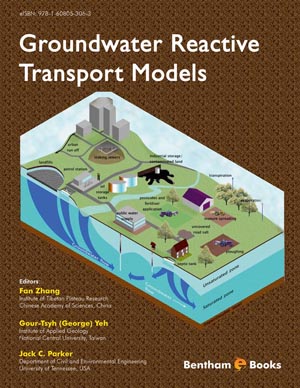The Nature of Radon Problem
Page: 3-24 (22)
Author: Ashok Kumar and Akhil Kadiyala
DOI: 10.2174/9781608059874114010003
PDF Price: $15
Abstract
This chapter provides a comprehensive discussion on the nature of radon problem using relevant literature. This chapter emphasizes details on the aspects of radon formation, units of measurement for radon, pathways for radon entry into homes and the influencing factors, radon monitoring techniques, radon action levels, health effects of radon exposure, and control measures to reduce in-house radon exposure.
Radon Problem in the State of Ohio, USA
Page: 25-85 (61)
Author: Ashok Kumar and Akhil Kadiyala
DOI: 10.2174/9781608059874114010004
PDF Price: $15
Abstract
This chapter provides extensive details on the problem of radon in Ohio, USA by developing and analyzing the associated geospatial maps and statistical metrics. The geospatial and statistical analyses are examined at both the county level and the zip code level to have a thorough understanding of the radon problem that assists in accurately assessing the radon problem in reference to a specific location.
Radon Statistics & Maps for Zip Code Areas in Counties of Ohio
Page: 87-275 (189)
Author: Ashok Kumar and Akhil Kadiyala
DOI: 10.2174/9781608059874114010005
PDF Price: $15
Abstract
This chapter provides detailed information regarding the 222Rn problem in each of the 88 counties in Ohio by using the GIS based 222Rn GM concentration maps and computing different statistical metrics. The geospatial and statistical analyses are examined at a county level in great detail for all the available 88 counties in Ohio that assists in accurately assessing the radon problem in Ohio at a more microscopic level in reference to a specific location.
Radon Mitigation in the State of Ohio, USA
Page: 277-361 (85)
Author: Ashok Kumar and Akhil Kadiyala
DOI: 10.2174/9781608059874114010006
PDF Price: $15
Abstract
This chapter provides details on the mitigation of 222Rn concentrations in Ohio, USA through development of associated geospatial maps and computation of statistical metrics. The geospatial and statistical analyses are examined at both the county level and the zip code level to have a thorough understanding of the 222Rn mitigation that assists in accurately estimating the influence of adopted mitigation systems in controlling the in-house 222Rn concentrations. Additionally, a novel approach to rank the performance of different mitigation systems has been developed. The developed methodology, incorporated in this chapter is used to identify the best performing mitigation system in Ohio and serves as a case study for radon mitigation specialists in ranking their respective mitigation systems.
Conclusions
Page: 363-365 (3)
Author: Ashok Kumar and Akhil Kadiyala
DOI: 10.2174/9781608059874114010007
PDF Price: $15
Abstract
This book provided a comprehensive review of the 222Rn problem in Ohio homes complimented with an analysis on the performance of installed mitigation systems by documenting different statistical metrics and GIS-based maps on a county level basis and a zip code level basis for the state of Ohio.
References
Page: 367-371 (5)
Author: Ashok Kumar and Akhil Kadiyala
DOI: 10.2174/9781608059874114010008
Author Index
Page: 373-375 (3)
Author: Ashok Kumar and Akhil Kadiyala
DOI: 10.2174/9781608059874114010009
Subject Index
Page: 377-379 (3)
Author: Ashok Kumar and Akhil Kadiyala
DOI: 10.2174/9781608059874114010010
Introduction
Radon is a highly radioactive gas and a waste product of nuclear reactors. Radon is also carcinogenic for this reason and can be linked to the incidence of lung cancer in non smoking individuals who often spend time indoors. Assessment and Mitigation of Indoor Radon Problem is a case book for professionals who are interested in modeling the distribution of Radon gas in a real environment. The book is a collection of results taken from a survey of locations in the US state of Ohio. The data in this case book is based is based on the homes and mitigation databases of the Ohio Radon Information System (ORIS), maintained by the Air Pollution Research Group (APRG) at The University of Toledo in Toledo. This case book will be of interest to software engineers and environmental health workers seeking to build a geographic information system for tracking radioactive waste that can contaminate residential areas, particularly household indoors.












